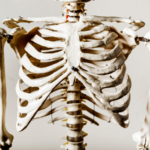The Centers for Medicare & Medicaid (CMS) announced in the fiscal year 2022 Hospital Prospective Payment System final rule published on August 2,2021 that it was adopting an April 1 implementation date for ICD-10-CM and ICD-10-PCS code updates, in addition to the annual October 1 update, beginning with April 1, 2022. The April 1 implementation… Read More »Coding Tips: Maintenance of the ICD-10-CM & ICD-10-PCS Coding Systems
The WHO ICD-11 classification is very different from the 10th version that the United States modified to create the ICD-10-CM code set that is used for reporting healthcare services on claims in the US today. In monthly code comparisons, we’ve looked at codes that are pre-coordinated or post-coordinated in ICD-11 and compared them with the… Read More »Comparing Codes Across ICD Versions: Spinal stenosis
Comparing Codes Across ICD Versions: Cholecystitis with cholelithiasis By: Mary H. Stanfill, MBI, ACHIP, RHIA, CCS, CCS-P, FAHIMA The WHO ICD-11 classification is very different from the 10th version that the United States modified to create the ICD-10-CM code set that is used for reporting healthcare services on claims in the US today. One distinct… Read More »ICD-11 Monthly – August 2023
The FY 2024 ICD-10-CM guidelines have been released and are now available for review. While there aren’t a large amount of guideline changes and updates, there are several notable highlights in Section C, Chapter-Specific Coding Guidelines to be aware of: The complete ICD-10-CM Official Guidelines for Coding and Reporting document can be found at :… Read More »FY 2024 ICD-10-CM Official Guidelines for Coding and Reporting
The WHO ICD-11 classification is very different from the 10th version that the United States modified to create the ICD-10-CM code set that is used for reporting healthcare services on claims in the US today. One distinct difference is ICD-11 codes can be either pre-coordinated or post-coordinated, whereas all ICD-10-CM codes are post-coordinated. Let’s compare… Read More »Comparing Codes Across ICD Versions: Coronary Artery Disease
On Friday, June 16, the proposed CMS ICD-10-CM diagnosis code changes were released. The diagnosis code set changes consist of 395 additions, 12 revisions and 25 deletions. The total ICD-10-CM codes proposed for FY 2024 is 74,044. Other inclusions in the newly released proposal is a 2.8% increase in payments as well as increasing the… Read More »2024 CMS Proposed ICD-10-CM Changes
The WHO ICD-11 classification is very different from the 10th version that the United States modified to create the ICD-10-CM code set that is used in the US today. One key difference, ICD-11 post-coordinated code clusters, provides a flexible way to represent details about a condition. Let’s compare codes for a common condition, diabetes mellitus,… Read More »Comparing Codes Across ICD Versions: Diabetes
While implementation of ICD-11 in the US is likely years away, it is not too early to become familiar and comfortable with the structure and format. ICD-11 is a digital classification that is very different from ICD-10-CM. Let’s compare and contrast coding of a common condition, osteoarthritis. Note: In this example, the ICD-11 code is… Read More »Comparing Codes Across ICD Versions: Osteoarthritis
A new subcategory for the fracture of ribs associated with compression of the chest and cardiopulmonary resuscitation, has been created.
To become familiar and comfortable with the structure and format of ICD-11, compare and contrast the coding of gastroenteritis.

